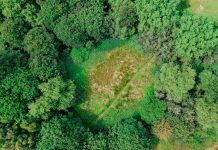Michał Baćkowski, Managing Director, KP Labs part of FP Space shares his expert perspective on how data processing from space can help save the Earth
According to information compiled by the National Oceanic and Atmospheric monitoring groups, 2017 was the warmest year to occur without an El Niño event. Along with plenty of other warnings, these findings should caution us that conditions on Earth are changing at a rate that is becoming increasingly hard to control and monitor.
However, by using a new, previously underestimated ally – data processing, climate change scientists may be able to monitor changes in ways they haven’t before. This data processing will not occur on Earth, it will take place in space instead.
Advanced data processing in space is now capable of monitoring agriculture, environmental protection and geology down on Earth. This has the potential to significantly expand our knowledge of what damages the environment, how this change occurs and at what pace this devastation takes place. With the help of satellite technology and specialised hyperspectral imaging cameras, this is becoming possible.
However, what earthly insights do data processing and satellite technology give us from up above?
Forestry
Thanks to dividing a spectral resolution of satellite images in the range of visible and near-infrared light into 150 channels, we will be able to obtain much more information from those images than before. While satellite technology could previously only offer 40 channels across the visible to near-infrared spectrum, new advancements allow us to cover forest classification, identifying species, the health condition of forests and forestation planning.
Data collected in this way will allow for a more balanced forestry policy and, as a result, a better and more efficient planning of the ecosystem management.
Environmental protection
Both conventional machine learning (including feature extraction, support vector machines and artificial neural networks) and deep learning (including data augmentation and a selection of hyper-parameters of deep neural networks) can produce pollution emission maps, water and soil pollution maps and land development management and analysis.
By using machine learning and algorithms working on the level of water eutrophication based on multispectral satellite imaging, we can monitor lakes with an efficiency that will allow us to deliver valuable information used for the overseeing of water basins, such as drinking water reservoirs. This is mostly around mitigating risks connected with water pollution which will translate into a lower risk of epidemics.
Geology
Data obtained from microsatellite technology can also be used for land coverage classification, creating mineral distribution maps, monitoring mining and post-mining areas, detecting pollutants penetrating the water and land, the possibility of detecting heavy metals such as cadmium, lead and arsenic based on a spectral signature. In recent times, satellite technologies have been increasingly popular for the development of the mining industry. Satellite technologies allow mining companies for a better use of resources and cutting production costs. An important aspect is also the safety of employees and local communities.
Data processing from satellites has the capability to monitor environmental changes over longer durations than monitoring technology on Earth and can detect the exact moments when forest and geological health starts to deteriorate, far more easily. Over three times the number of light spectrums gives us far greater access to these processes, when they occur and how often. And what’s most exciting is that the satellite wielding this technology could be ready for launch into low-orbit by 2022, monitoring all the information we’d need by December 2023.
An example of a company working on this technology comes from Poland. KPLabs, which, together with Future Processing and FP Instruments, belongs to the FP Space consortium, is working on a satellite which will be equipped with a hyperspectral instrument and advanced data processing onboard using deep convolutional neural networks. The Intuition-1, as it’s called, aims to be the first satellite in the world with the processing capacity that makes it possible to segment hyperspectral images in the orbit. The segmentation of images onboard the satellite will allow for a more effective communication and will shorten reaction time for events we want to monitor.
The next stage of the project is Intuition-2, which will be a constellation of 12U satellites, all equipped with HyperCams. This will significantly increase the earth observation range. With these technological developments close to completion, the future of space is exciting, but the future of Earth is even more so.
Michał Baćkowski
Managing Director
KP Labs, part of FP Space











